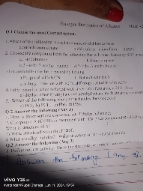p-Block Elements
p Block Elements PDF Notes, Important Questions and Synopsis
SYNOPSIS
P-BLOCK ELEMENTS & THEIR COMPOUNDS
TRENDS IN PROPERTIES OF p-BLOCK ELEMENTS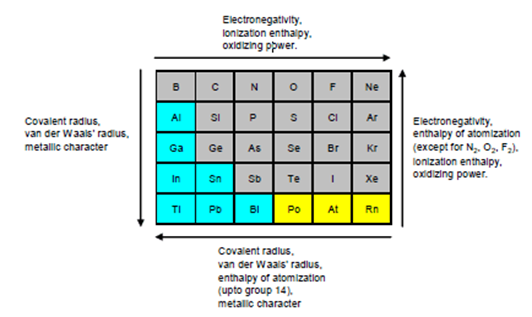
- GROUP 13 ELEMENTS: THE BORON FAMILY
Oxidation state and trends in chemical reactivity:
General oxidation state = +3
Reactivity towards acids and alkalies:
2Al(s) + 6HCl(aq) → 2Al3+(aq) + 6Cl-(aq) + 3H2(g)
2Al(s) + 2NaOH(aq) + 6H2O(1) → 2Na+[Al(OH)4]-(aq) + 3H2(g) Sodium tetrahydroxoaluminate (III)Reactivity towards halogens:
2E(s) + 3X2(g) → 2EX3(s) (X = F, Cl, Br, I)BORON (B):
Some important reactions of boron and its compounds: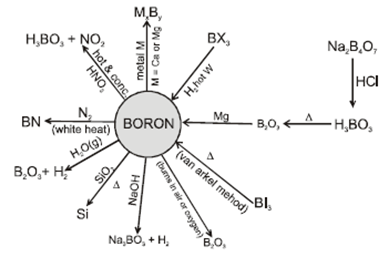
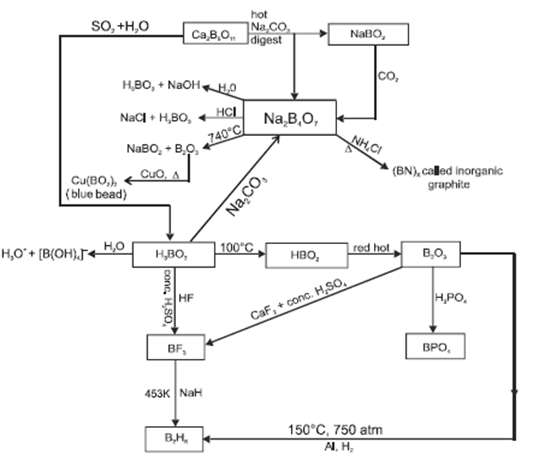
- Small amines such as NH3, CH3NH2 and (CH3)2NH give unsymmetrical cleavage of diborane.
B2H6 + 2NH3 → [H2B(NH3)2]+ + [BH4]- - Large amines such as (CH3)3N and pyridine give symmetrical cleavage of diborane.
2(CH3)3N + B2H6 → 2H3B ← N(CH3)3
- Small amines such as NH3, CH3NH2 and (CH3)2NH give unsymmetrical cleavage of diborane.
-
GROUP OF 14 ELEMENTS: THE CARBON FAMILY
Carbon (C), silicon (Si), germanium (Ge), tin (Sn) and lead (Pb) are members of Group 14.
Electronic Configuration: ns2np2Oxidation states and trends in chemical reactivity:Common oxidation states = +4 and +2. Carbon also exhibits the negative oxidation state. Oxidation state increases in the sequence: Ge < Sn < Pb.- Reactivity towards oxygen:
All members when heated in oxygen form oxides. There are mainly two types of oxides, i.e. monoxide and dioxide of the formulas MO and MO2, respectively. - Reactivity towards water:
Tin decomposes steam to form dioxide and dihydrogen gas. - Reactivity towards halogen:
These elements can form halides of formula MX2 and MX4 (where X = F, Cl, Br, I). Stability of dihalides increases down the group.
SOME IMPORTANT REACTIONS OF CO, CO2 AND METAL CARBIDES:
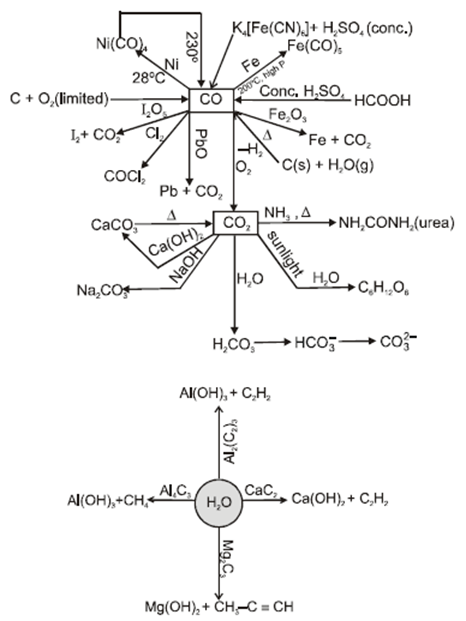
- CLASSIFICATION OF SILICATES:
- Orthosilicates

- Pyrosilicates:

- Cyclic silicates:
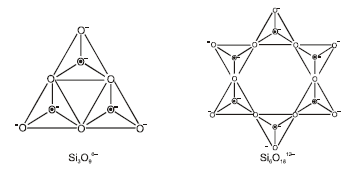
- Chain silicates:
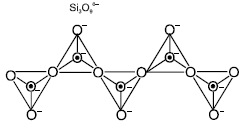
- Two-dimensional sheet silicates:
In such silicates, the oxygen atoms of each tetrahedral are shared with adjacent SiO44- tetrahedrals. Such sharing forms a two-dimension sheet structure with the general formula (Si2O5)n2n. - Three-dimensional sheet silicates:
These silicates involve all four oxygen atoms in sharing with adjacent SiO44- tetrahedral units.
- SILICONES:
- Silicones can be prepared from the following types of compounds only.
- R3SiCl
- R2SiCl2
- RSiCl3
- Silicones from the hydrolysis of (CH3)3SiCl:


- Silicones from the hydrolysis of a mixture of (CH3)3SiCl and (CH2)2SiCl2:
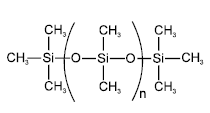
- When a compound like CH3SiCl3 undergoes hydrolysis, a complex cross-linked polymer is obtained.
- The hydrocarbon layer along the silicon-oxygen chain makes silicones water-repellent.
COMPOUNDS OF LEAD:
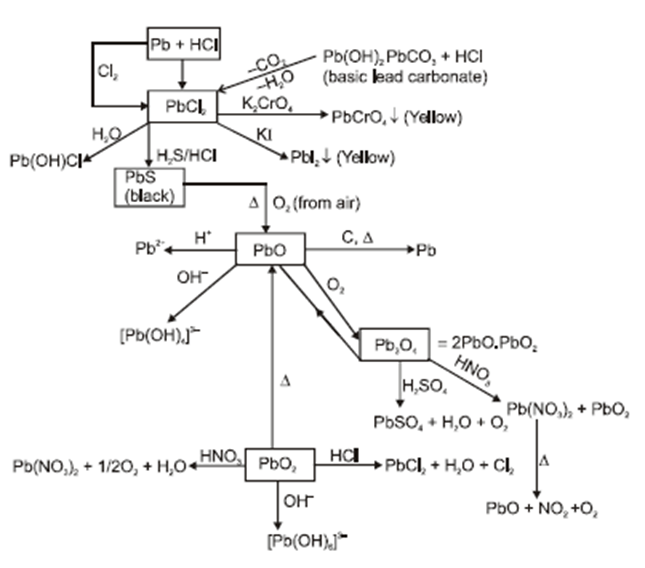
COMPOUNDS OF TIN:
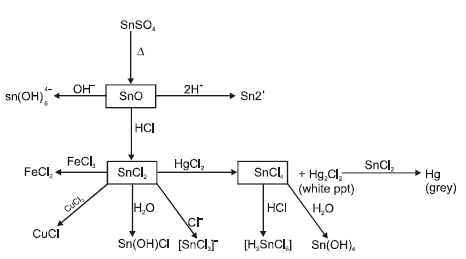
- Reactivity towards oxygen:
-
GROUP 15 ELEMENTS: THE NITROGEN FAMILY
-
Electronic Configuration: ns2np3
Atomic and Ionic Radii: Covalent and ionic (in a particular state) radii increase in size down the group.
Physical Properties:
All the elements of this group are polyatomic. Metallic character increases down the group. The boiling points, in general, increase from top to bottom in the group, but the melting point increases up to arsenic and then decreases up to bismuth. Except nitrogen, all the elements show allotropy.Chemical Properties:
Oxidation states and trends in chemical reactivity:
The common oxidation states of these elements are +3, +3 and +5. The stability of +5 oxidation state decreases and that of +3 state increases (due to inert pair effect) down the group; Bi3+ > Sb3+ >As3+; Bi5+ <Sb5+ < As5+. Nitrogen exhibits +1, +2, +4 oxidation states also when it reacts with oxygen.Anomalous properties of nitrogen:
Properties of hydrides of Group 15 elements
i. Stability of hydrides decreases from NH3 to BiH3 which can be observed from their bond dissociation enthalpy. Consequently, the reducing character of the hydrides increases. Basicity also decreases in the order: NH3 > PH3 > AsH3 > SbH3 ≥ BiH3.Property
NH3
PH3
AsH3
SbH3
BiH3
Melting point (K)
195.2
139.5
156.7
185
-
Boiling point (K)
238.5
185.5
210.6
254.6
290
(E-H) Distance/pm
101.7
141.5
151.9
170.7
-
HEH angle(°)
107.8
93.6
91.8
91.3
-
∆fH-/kJ mol-1
-46.1
13.4
66.4
145.1
278
∆dissH-(E-H)/KJ mol-
389
322
297
255
-
ii. The oxide in the higher oxidation state of the element is more acidic than that of the lower oxidation state. Their acidic character decreases down the group. The oxides of the type E2O3 of nitrogen and phosphorus are purely acidic, those of arsenic and antimony are amphoteric, and those of bismuth are predominantly basic.
iii. Nitrogen does not form pentahalide due to non-availability of d-orbitals in its valence shell. Pentahalides are more covalent than trihalides. Halides are hydrolysed in water forming oxyacids or oxychlorides.
PCl3 + H2O→H3PO3 + HCl;
SbCl3 + H2O→SbOCl↓ (orange) + 2HCl;
BiCl3 + H2O→BiOCl↓ (white) + 2HCliv. These elements react with metals to form their binary compounds exhibiting the +3 oxidation state, such as Ca3N2 (calcium nitride), Ca3P2 (calcium phosphide) and Na3As2 (sodium arsenide).
NITROGEN (N) AND ITS COMPOUNDS: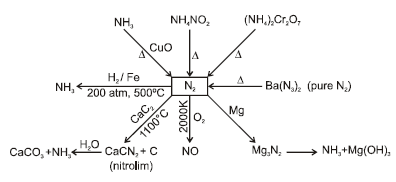
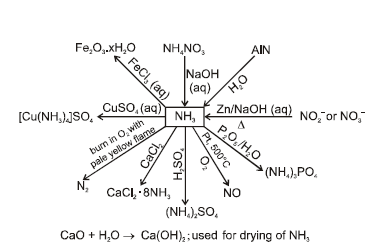
Oxides of NitrogenName
Formula
Oxidation methods of preparation
Common methods of preparation
Physical appearance and chemical nature
Dinitrogen oxides[Nitrogen(I) oxide]
N2O
+1

Colourless gas, neutral
Nitrogen monoxide[Nitrogen(II) oxide](Nitric acid)
NO
+2
2NaNo2 + 2FeSO4 + 3H2SO4→ Fe2(SO4)2 + 2NaHSO4 + 2H2O + 2NO
Colourless gas, neutral
Dinitrogen trioxide [Nitrogen(III)oxide(Nitrogen sesquioxide)
N2O2
+3

Blue solid, acidic
Nitrogen dioxide[Nitrogen (IV)oxide]
NO2
+4

brown gas, acidic
Dinitrogen tetroxide [Nitrogen(IV)oxide]
N2O4
+4
Colourless solid/ liquid, acidic
Dinitrogen pentoxide[Nitrogen (IV)oxide]
N2O5
+5
Colourless solid, acidic
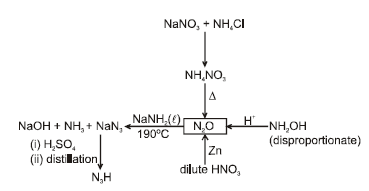
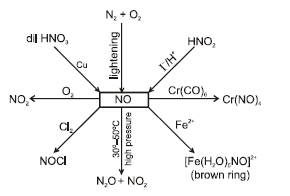
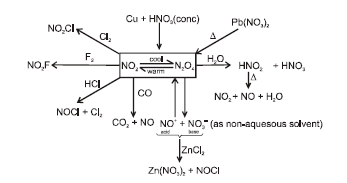
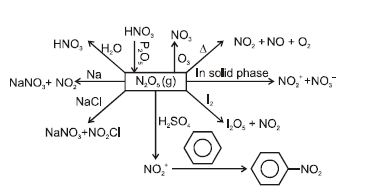
HNO3
a) dilute
NH4NO3 + 4Sn + 10HNO3 → 4Sn(NO3)2 + NH4NO3 + 3H2O
b) concentrated
Sn + 4HNO3 → H2SnO3 + 4NO2 + H2O
Meta stannic acid antimonic acid
b) concentrated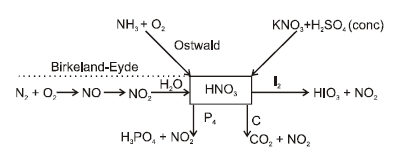
PHOSPHORUS (P) AND ITS COMPOUNDS: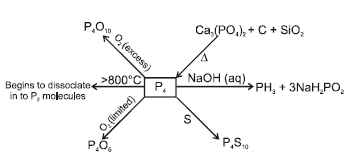
When white phosphorus is heated in the atmosphere of CO2 or coal gas at 573 K, red phosphorus is produced.
α-Black phosphorus is formed when red phosphorus is heated in a sealed tube at 803 K. β-Black phosphorus is prepared by heating white phosphorus at 473 K under high pressure.
Order of thermodynamic stability of various allotropes of phosphorus: black > red > white.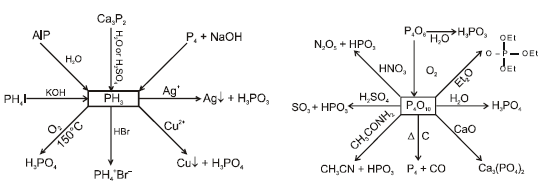
Oxoacids of PhosphorusName
Formula
Oxidation state of phosphorus
Characteristic bonds and their number
Preparation
Hypophosphorus
H2PO2
+1
One P–OH
Two P–H
One P=O
White P4 + alkali
Orthophosphorus
H3PO3
+3
Two P–OH
One P–H
One P=O
P2O3 + H2O
Pyrophosphorus
H4P2O5
+3
Two P–OH
Two P–H
Two P–H
PCl3 + H3PO3
Hypophosphoric
H4P2O6
+4
Four P–OH
Two P=O
One P–P
Red P4 + alkali
Orthophosphoric
H3PO4
+5
Three P–OH
One P=O
P4O10 + H2O
Pyrophosphoric
H4P2 O7
+5
Four P–OH
One P=O
One P–O–P
Heat phosphorus acid
Metaphosphoric
(HPO3)3
+5
Three P–OH
Three P=O
Three P–O–P
Phosphorus acid + Br2, heat in a sealed tube
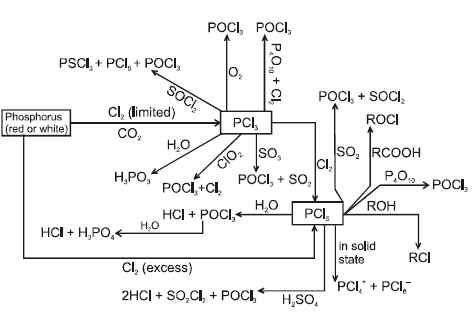
-
-
GROUP 16 ELEMENTS: THE OXYGEN FAMILY
Electtronic Configuration: ns2 np4Atomic and Ionic Radii:
Due to an increase in the number of shells, atomic and ionic radii increase from top to bottom in the group. The size of oxygen atoms is however exceptionally small.Physical Properties:
Oxygen and sulphur are non-metals, selenium and tellurium are metalloids, whereas polonium is a metal. Polonium is radioactive and is short lived (Half-life is 13.8 days). The melting and boiling points increase with increase in the atomic number down the group.Catenation:
Tendency for catenation decreases down the group. This property is prominently displayed by sulphur (S8). The S-S bond is important in the biological system and is found in some proteins and enzymes such as cysteine.Chemical Properties:
Oxidation states and trends in chemical reactivity:
Elements of the group exhibit +2, +4, +6 oxidation states, but +4 and +6 are more common.
Anomalous behaviour of oxygen:
The anomalous behaviour of oxygen is due to its small size and high electronegativity. The absence of d orbitals in oxygen limits its covalency to four.i. Their acidic character increases from H2O to H2Te. The increase in acidic character can be understood in terms of decrease in bond (H-E) dissociation enthalpy down the group. Owing to the decrease in bond (H-E) dissociation enthalpy down the group, the thermal stability of hydrides also decreases from H2O to H2Po. All the hydrides except water possess reducing property and this property increases from H2S to H2Te.
Property
H2O
H2S
H2Se
H2Te
m.p./K
273
188
208
222
b.p./K
373
213
232
269
H-E distance/pm
96
134
146
169
HEH angle(°)
104
92
91
90
∆fH/kJ mol‑1
-286
-20
73
100
∆dissH(H-E)/KJ mol‑
463
347
276
238
Dissociation constant1
1.8×10-16
1.3×10-7
1.3×10-4
23×10-3
ii. Reducing property of dioxide decreases from SO2 to TeO2; SO2 is reducing, while TeO2 is an oxidising agent. Oxides are generally acidic.
iii. Stabilities of the halides decrease in the order: F > Cl > Br > I. Sulphur hexafluoride SF6 is exceptionally stable for steric reasons.
The well-known monohalides are dimeric. Examples: S2F2, S2Cl2, S2Br2, Se2Cl2, Se2Br2. These dimeric halides undergo disproportionation as given below:
2Se2Cl2 → SeCl4 + 3SeOXYGEN (O2) AND ITS COMPOUNDS:
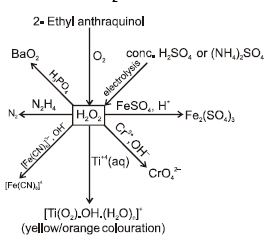
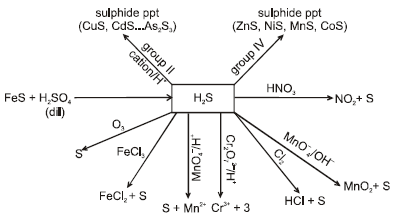
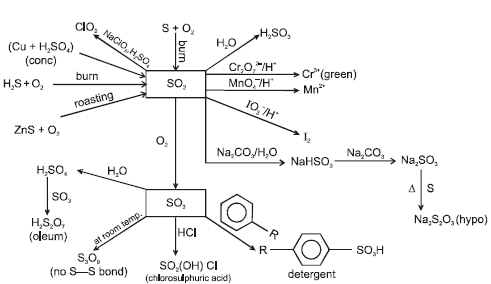
Oxo-acids of Sulphur- 1. Sulphurous
Acid series
a) H2SO3
S(IV)
Sulphuric acid

- 2. Sulphuric
Acid series
a) H2SO4
S(V)
Sulphuric acid
- 3. Peroxo
acid series
a) H2SO4
S(VI)
Peroxomonosulphuric acid
 Caro , acid)
Caro , acid)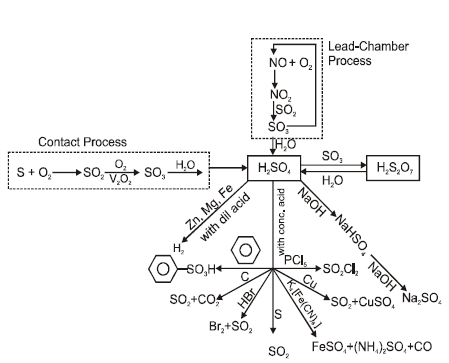
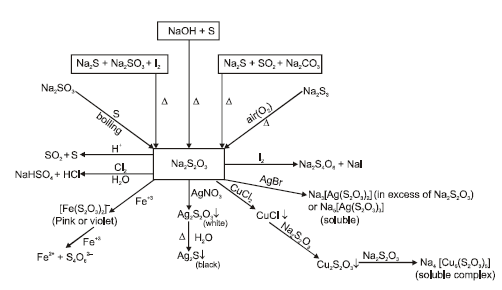
-
GROUP 17 ELEMENTS: THE HALOGEN FAMILY
Fluorine, chlorine, bromine, iodine and astatine are members of Group 17.
Electronic Configuration: ns2np5
Atomic and Ionic Radii:
The halogens have the smallest atomic radii in their respective periods due to maximum effective nuclear charge.
Physical Properties:
Fluorine and chlorine are gases, bromine is a liquid, whereas iodine is a solid. Their melting and boiling points steadily increase with atomic number. The X–X bond disassociation enthalpies from chlorine onwards show the expected trend: Cl–Cl > Br–Br > F–F > I–I.Chemical Properties:
Oxidation states and trends in chemical reactivity:
All the halogens exhibit −1 oxidation state. However, chlorine, bromine and iodine exhibit + 1, +3, +5 and +7 oxidation states also.
2F2(g) + 2H2O(𝓁) → 4H+(aq) + 4F-(aq) + O2(g)
X2(g) + H2O(𝓁) → HX(aq) + HOX(aq); (where X = Cl or Br)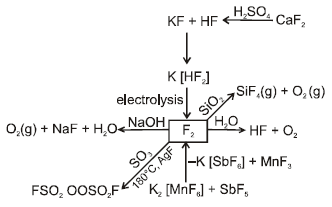
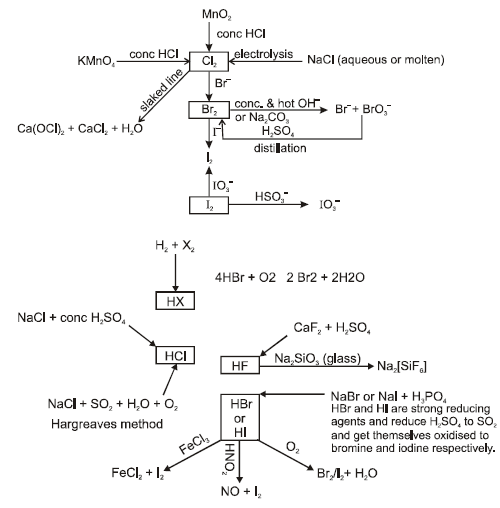
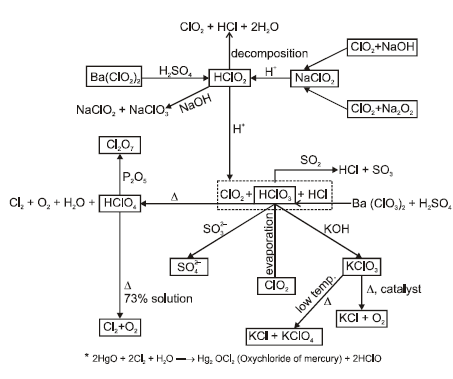
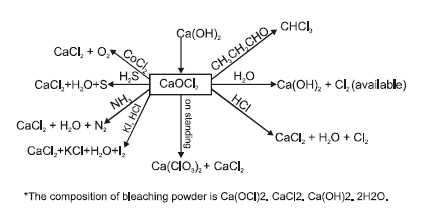
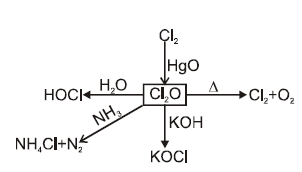
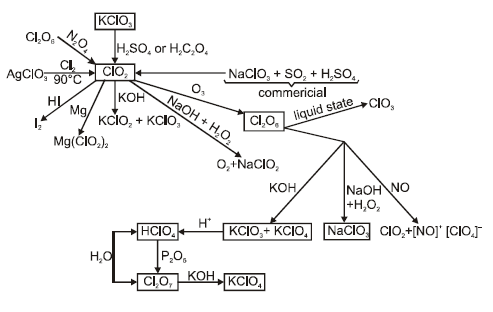
-
GROUP 18 ELEMENTS: (THE ZERO GROUP FAMILY)
helium, neon, argon, krypton, xenon and radon.
o The most abundant element in air is Ar. The order of abundance in the air is Ar>Ne >Kr >He > Xe.Electronic Configuration: ns2np6
Atomic Radii:
Atomic radii increase down the group with increase in the atomic number.Physical Properties:
All the noble gases are monatomic. They are colourless and tasteless. They are sparingly soluble in water. They have very low melting and boiling points because the only type of interatomic interaction in these elements is weak dispersion forces.Chemical Properties:
In general, noble gases are the least reactive. Their inertness to chemical reactivity is attributed to the following reasons:i. The noble gases except helium (1s2) have completely filled ns2 np6 electronic configuration in their valence shell.
ii. They have high ionisation enthalpy and more positive electron gain enthalpy. The reactivity of noble gases has been investigated occasionally ever since their discovery, but all attempts to force them to react to form compounds were unsuccessful for quite a few years. In March 1962, Neil Bartlett, then at the University of British Columbia, observed the reaction of a noble gas. First, he prepared a red compound which is formulated as O2+ PtF6-. Then he realised that the first ionisation enthalpy of molecular oxygen (1175 kJ mol -1) was almost identical with that xenon (1170 kJ mol-1). He made efforts to prepare the same type of compound with Xe+ PtF6- by mixing Pt F6 and xenon. After this discovery, a number of xenon compounds mainly with the most electronegative elements like fluorine and oxygen have been synthesised.
If helium is compressed and liquefied, it forms He(I) liquid at 4.2 K. This liquid is a normal liquid like any other liquid. But if it is further cooled, then He(II) is obtained at 2.2 K, which is known as super fluid, because it is a liquid with properties of gases. It climbs through the walls of the container and comes out. It has a very high thermal conductivity and very low viscosity.Clathrate Compounds:
During the formation of ice, Xe atoms will be trapped in the cavities (or cages) formed by the water molecules in the crystal structure of ice. Compounds thus obtained are called clathrate compounds.
Clathrate provides a convenient means of storing radioactive isotopes of Kr and Xe produced in nuclear reactors.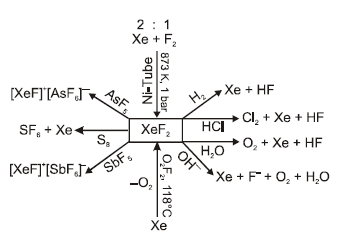
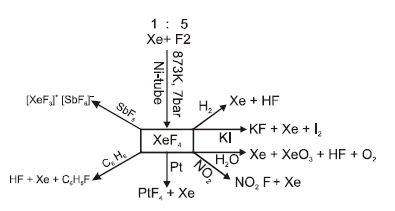
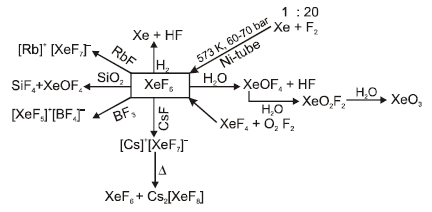
Related Chapters
- Some Basic Concepts in Chemistry
- States of Matter
- Atomic Structure
- Chemical Bonding and Molecular Structure
- Chemical Thermodynamics
- Solid State
- Solutions
- Equilibrium
- Redox Reactions and Electrochemistry
- Chemical Kinetics
- Surface Chemistry
- Classification of Elements and Periodicity in Properties
- General Principles and Processes of Isolation of Metals
- Hydrogen
- s-Block Element (Alkali and Alkaline Earth Metals)
- d - and f - Block Elements
- Co-ordination Compounds
- Environmental Chemistry
- Purification and Characterisation of Organic Compounds
- Some Basic Principles of Organic Chemistry
- Hydrocarbons
- Organic Compounds Containing Halogens
- Organic Compounds Containing Oxygen
- Organic Compounds Containing Nitrogen
- Polymers
- Biomolecules
- Chemistry in Everyday Life
- Principles Related to Practical Chemistry

